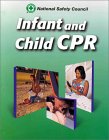|
MoonLily Home Read more parenting and breastfeeding articles in my blog
Nanny’s Place
|
![]()
| Receive free child health and safety info! Subscribe to Nanny’s Notes! Send your email to [email protected] |
![]()

Pals Betty Morris-Hamilton Buy This Art Print At AllPosters.com |
![]()
 |

|
 |
| Nanny’s Place Home |


Sudden Infant Death Syndrome
Causes and Recommendations
What is sudden infant death syndrome? What causes it? What can you do to lower your baby’s risk?SIDS has been defined as "The sudden death of an infant under 1 year of age, which remains unexplained after a thorough case investigation, including performance of a complete autopsy, examination of the death scene, and review of the clinical history." (Defining the sudden infant death syndrome (SIDS): deliberations of an expert panel convened by the National Institute of Child Health and Human Development. Pediatr Pathol. 1991;11:677-684 ). SIDS is rare when a baby is younger than 1 month, peaks between 2 and four months, and then declines.
In March 2000, the American Academy of Pediatrics issued a policy statement that summarized their current understanding of the causes and risks of sudden infant death syndrome (SIDS), along with recommendations on how to reduce that risk. For more details, please read the full article.
Independent studies have identified several risk factors for SIDS, including late or no prenatal care, young maternal age, prematurity and/or low birth weight, and male sex. American Indians and Blacks consistently have rates 2 to 3 times higher than the national average.
What can you do to protect your child? Here are some of the Academy’s recommendations:
Sleep Position
Put your baby to sleep on her back.One of the most significant of the risk factors and among the easiest to change is prone (stomach) sleeping. In addition to the evidence from several well designed studies, the causal connection between sleep position and SIDS is strengthened by two common-sense observations:
1. In countries where there have been successful campaigns to reduce the amount of prone sleeping in babies, the rates of SIDS have also decreased. For example, in 1992, the Academy recommended that babies be placed on their backs to sleep. Since then, prone sleeping in US babies decreased from 70% to 20%, and the SIDS rate decreased by more than 40%.
2. In cultures where prone sleeping is rare, SIDS rates have also been rare.
While supine (back) sleeping is recommended as best for reducing the risk of SIDS, side sleeping is also much safer than prone. It’s been suggested that side sleeping may have a higher risk than back sleeping because the position is unstable and there is a chance that your baby will roll over onto her tummy.
I noticed two interesting things in this section of the Academy article:
The first is that almost 20% of care givers seem to switch the sleeping position from non prone to prone at 1 to 3 months of age, which is the peak range for SIDS! So make sure that anyone who takes care of your child knows that they must put him to sleep on his back.
There is also some evidence that a baby who is used to sleeping on his back and is then placed on his stomach has an even higher risk of SIDS than normal.
The second point of interest is that black babies are nearly twice as likely as white babies to be placed on their tummies, which may account for the higher rate of SIDS among blacks mentioned earlier. The National Infant Sleep Position Study, an article in the April 26, 2000 issue of The Journal of the American Medical Association, reports on the results of telephone surveys taken in the US. From 1994 to 1998, tummy sleeping declined from 44% to 17% among white babies and from 53% to 32% among black babies. Back sleeping increased from 27% to 58% among white babies and from 17% to 31% among black babies.
One of the reasons given for putting babies to sleep on their tummies is that care givers felt they would be more comfortable that way.
Soft Sleep Surfaces and Loose Bedding
Don’t put your baby to sleep on waterbeds, sofas, or other soft surfaces.
Don’t use soft materials, such as pillows, quilts, comforters, and sheepskins, in your baby’s crib.
Also avoid loose bedding and make sure any thin blankets you use are tucked in around the crib mattress. Or better yet, use sleep clothing and no sheet or blanket at all.
In a significant number of reported SIDS cases, the baby’s head was covered by loose bedding. Also, many studies have found that loose bedding is an epidemiologic risk factor for SIDS.
You can find more information on soft bedding in Blankets, Bedding and Crib Toys
Overheating
Don’t overheat your baby!Put her in light sleep clothes and keep the bedroom at a temperature comfortable for a lightly clothed adult. Don’t over bundle her. She should not feel hot to the touch.
There is some evidence that the more clothing and blankets you put on your baby, or the higher the room temperature the greater the risk of SIDS. The association between the increased risk and more clothing and coverings may also be related to an increased chance of asphyxiation.
Smoking
If you’re pregnant and you smoke, stop!I know this isn’t an easy thing to do, but if you’re not concerned about your own health, please think about the health of your baby.
In addition to any other potential problems, smoking during pregnancy has emerged as a major risk factor in almost every epidemiologic study of SIDS. Intervention studies show a decrease in SIDS associated with a decrease in maternal smoking.
Bed Sharing
Be careful about bed sharing.There are some reports of babies who suffocated when an adult rolled on top of them. This seems more likely to occur when the adult has been using substances such as alcohol or mind-altering drugs. The risk of SIDS associated with co-sleeping is significantly greater among smokers, yet another reason to stop.
While overlying may be the cause of SIDS in some instances, other possible factors are soft sleep surfaces, entrapment, and the possibility of babies rolling to their tummies.
The Academy suggests placing your baby’s crib near your bed as an alternative to bed sharing. If you do choose to bring your baby to bed with you in order to breastfeed, take care to keep her in a non prone position, avoid soft surfaces and loose bedding, and make sure there are no openings she could get trapped in. (Move the bed away from the wall, for example.)
The Academy also recommends that adults (other than the parents), children, or other siblings should avoid bed sharing with an infant.
Preterm Birth and Low Birth Weight
Studies have shown that babies born prematurity or who are low birth weight are at a greater risk for SIDS. The earlier your baby is born or the less she weighs, the greater her risk.If you’re pregnant, do what you can to avoid premature birth and/or low birth weight by getting the proper nutrition and otherwise keeping yourself healthy. Proper nutrition can help prevent many of the problems that sometimes lead to early birth or small babies.
The Nutrition Page of The Online Birth Center has links to various resources. You may also want to read Keeping Childbearing Normal Through Nutrition, from Midwifery Today.
If you do have a small or preterm baby, use the same methods to reduce SIDS risk that are suggested in this article for full-term babies.
Other Recommendations
*Your baby needs a certain amount of tummy time for developmental reasons and to help prevent flat spots on her head. This should only be done while she is awake and someone is watching her.*Devices that claim to maintain sleep position or reduce the risk of rebreathing are not recommended. None of them have been tested enough to know if they work or if they are safe.
*If your baby has a problem with cardiorespiratory instability, electronic respiratory and cardiac monitors may be valuable, but there is no evidence that home monitoring with these monitors decreases the incidence of SIDS.
For more information, read the full article:
Changing Concepts of Sudden Infant Death Syndrome: Implications for Infant Sleeping Environment and Sleep Position (RE9946)
Pediatrics Volume 105, Number 3 March 2000, pp 650-656
Go to the Health and Safety Articles Index
Go to the Main Articles Index
Webmaster Make Money With Your Site!
|
Last updated Sun, Jun 4, 2006
Items for the Chariot: [email protected]
Items for Spirit Speaks: [email protected]
Items for Magical Journeys: [email protected]
Items for Online Birth Center or questions about birth: [email protected]
Contact Nanny: [email protected]
All other questions: [email protected]
© 1999-2006 by Donna Zelzer. All rights reserved.
|
MoonLily Home |
| The Chariot |

